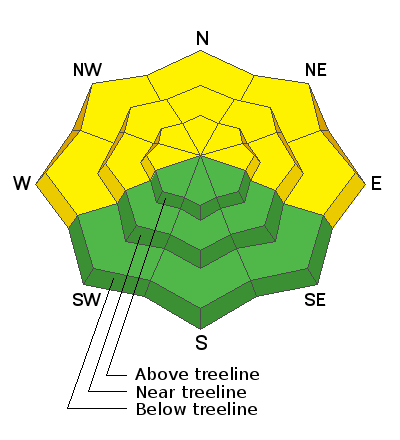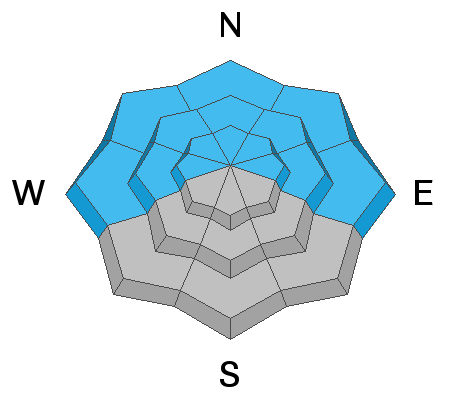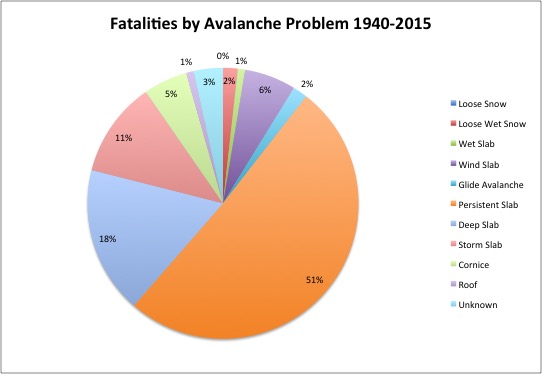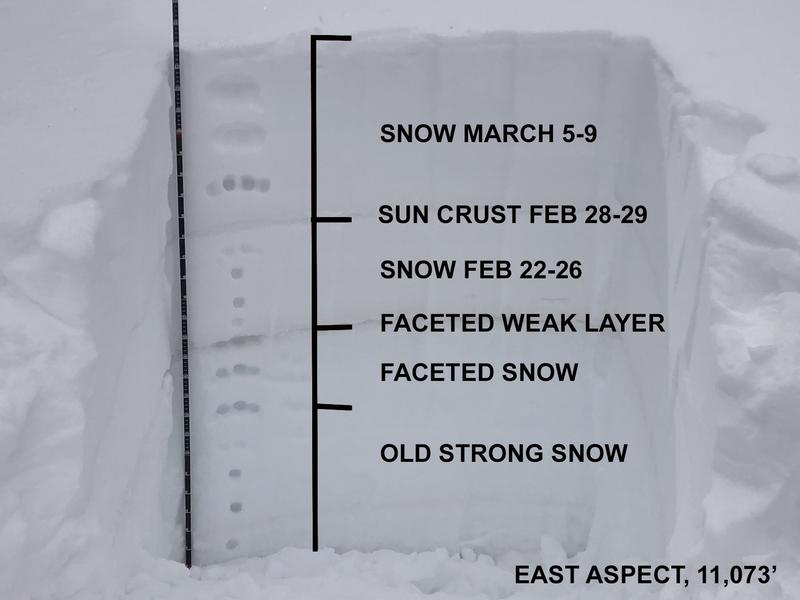Road Conditions: The road is a mix of dirt, mud, and patches of packed snow. It gets sloppier as the days warm up. All wheel drive and good tires are recommended.
Grooming: Trails have not been groomed since last week but they are well packed from traffic.
6:00 a.m. weather data:
24 Hour Snow 0" 72 Hour Snow 1" Base Depth at Gold Basin 60" Wind SW 5-10 Temp 31F
Cloudy skies have kept the temperatures warm, and overnight lows just barely dropped below the freezing mark at 10,000'. A weak system moves through our area today. This will produce scattered snow showers with not much accumulation. We might squeeze two inches out of this one. It looks like we have already hit our high temperature for the day, and the mercury should hover right around 30 degrees in mountains today. SW winds will blow 5-10 mph. This system will exit by tomorrow bringing a return to sunshine with slightly colder temperatures than we saw earlier this week.
Snowpack
Yesterday was super warm with highs in the upper 30's and lots of sunshine. The snow pack has certainly taken a hit from this warm weather. You'll find Solar aspects crusted over. With clouds and colder temperatures today I'm expecting these slopes to stay frozen. The snow even started to get heavy on North aspects yesterday. Our snow pack continues to adjust to the storm that dropped two inches of water just over a week ago. A buried persistent weak layer of faceted snow that formed during the Jan-Feb high pressure is still capable of producing avalanches over two feet deep. Eric Trenbeath shot this video on Sunday 3/13. He discusses the snow pack and his thoughts on moving to Moderate danger a week after the storm.
Snow and Weather Links
It was an active weekend throughout the state for
human triggered avalanches with almost all of the other zones reporting accidents and near misses. A lot can be learned from these reports, and it's certainly worth your time to read through them.












